The Osprey Rook 50 Backpack is from a completely new series, a lightweight pack with an excellent suspension system, a rain cover, and a very fair price.

Key features
- AirSpeed ventilated trampoline style suspended mesh back panel.
- Rain cover included.
- Adjustable harness with a ladder-lock system.
- Lightweight backpack.
- Sleeping bag compartment included.
- Attachment loops for Daylite and Daylite Plus packs.
- Reasonable price.
Rook 50 Pack – What this is about
This Rook 50 is a part of a brand new Osprey’s series of Rook and Renn packs for men and women, respectively, which they launched for the season 2019. The Rook series currently includes this 50 liters pack and the Rook 65 pack.
They describe it as an entry-level backpacking pack and the meaning of this should be as follows. They targetted the price point, so this is for people who want to have a top-notch pack from such a renown brand with most of their great features but are not willing to pay too much.
So what you have here is a nice balance between value and money. This is again a quality pack but with fewer features than what you would expect from this brand, this will become clear in the text below.
Who is it for
Size-wise, with the capacity of 50 liters, the Rook 50 is a great option for the weekend and multi-day adventures which do not require lots of equipment. The carrying capacity is quite moderate but you will carry the load comfortably. If ventilation is essential, this is a pack to choose.
Weight-wise, with a weight of 3.5 lb (1.59 kg), this pack is a great option for hikers and even for backpackers, and for travelers as well. But there are lighter options and you will see some below.
Overview of features
The Rook 50 is a top-loading pack with a lid and a spindrift collar underneath it. But you also have a zippered entrance to the bottom compartment with a removable divider between the two compartments. The pack is hydration compatible, with an internal sleeve for a water bladder. It comes with a rain cover included in a dedicated pocket on the bottom, see the picture below.
This is a light pack, in view of its capacity, the volume/weight ratio of 31 liters/kg which is a great number and it is similar to the Osprey Xenith 75 pack. But you might want to compare this with Osprey Eja 58 where this value is 49 liters/kg or perhaps with Gregory Optic 48 pack where you have the volume/weight ratio 43 liters/kg. So the Rook 50 is indeed lightweight but not in the category of ultra-lightweight packs.
The harness
This is the most important part of every pack of such a size. So what you have here is an adjustable AirSpeed ventilated trampoline-style suspended mesh which is supported by a lightweight peripheral frame. I have been using packs with such a tensioned mesh for decades and this is the best possible ventilation in general. In this case they have made this extreme. If you are familiar with their new Exos and Eja series, then you know it, the back mesh is very similar, but there is a big difference in the hip belt.
They do not use the term anti-gravity (AG) here but this design is inspired by that Osprey’s famous invention. In my view, the hip belt here with its generous foam padding is far better than in the new Exos & Eja packs and in their Levity and Lumina packs.
Note that the pack is one size, but the torso length is adjustable here, so you will have no problem to find your best fit. They have added an innovative ladder-lock system shown in the picture below. So how you use this?
You unlock the harness by pulling those two loops on the sides, visible in the picture below, and then slide it up and down along the side rails, and then lock into the desired position by pushing the lock into those loops visible in the picture. I do not remember seeing such a ladder system in any other pack currently on the market, so they have introduced something unique here.
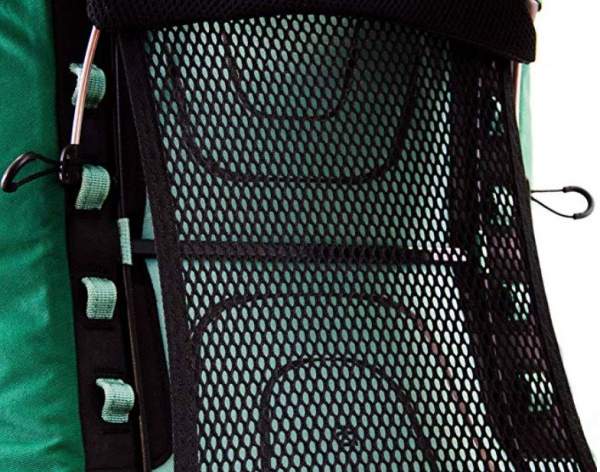
This is accompanied by a two-level load lifters design. This is very useful when you move the harness far down or far up and it ensures that the harness remains comfortable in whichever position you place it.
The shoulder straps are well-padded and the same is with the hip belt, there is nothing one could object here. An adjustable sternum strap with an emergency whistle is there as well.
The pockets
You have them 5 here. Two zippered pockets are on the hip belt (one of them shown below), and two mesh stretch pockets are on the sides, those are with dual top and side entrance. One zippered pocket is on the lid, see the picture. Note that all zippers are with the usual nicely designed pull loops. There is nothing on the front, such a large area is empty, pity. But you have webbing loops instead for gear attachment.
Attachment elements and straps
The pack comes with a pair of removable compression straps on the bottom-front part where you can attach a sleeping pad or anything similar. On the front you have attachment loops where you can attach Osprey’s daypacks i.e., the Osprey Daylite backpack and Osprey Daylite Plus. So this is something which puts it in the group of several Osprey’s series with such a feature.
One quite unique feature is the hip belt pockets attached to the pack with the lower side compression straps, I am not sure if this is really a smart idea. You also have two usual upper side compression straps, which means one on each side. On the top of the lid you have webbing loops for gear attachment.
So what makes it ‘entry-level’?
This phrase I have seen used by Osprey’s representatives. For an entry-level pack, you have plenty of features here. But you will notice that the pack comes without Osprey’s Stow-on-the-Go poles attachment system. If you are not familiar with it, check any of Osprey’s packs in my pages with backpacks, take as an example this Sirrus 50.
There are no loops on the front for an ice axe and poles attachment, perhaps this is the most important detail missing here, I use such loops for poles all the time. The lid is with one pocket only but this is not so bad. The front is without any storage elements, but there are loops as mentioned above.
So this all should not be understood as true objections although I list them below just that you know about them, perhaps some of them are essential to you.
A bit more about the Rook & Renn series you can see in this short video:
Specifications
- Weight: 3.5 lb (1.59 kg).
- Weight capacity: 35 – 40 lb (16 – 18 kg).
- Volume capacity: 3051 in³ (50 liters).
- Dimensions (L x W x D): 29.1 x 16.5 x 13.8 in (74 x 42 x 35 cm).
- Torso fit range: 17 – 22 in (43 – 56 cm).
- Hip belt fit range: 25 – 50 in (63 – 127 cm).
- Main fabric: 600D Polyester.
- Colors: 2, see the pictures.
- Osprey’s All Mighty guarantee included.
Osprey Rook 50 pack vs Competitors
I have decided to show this Rook 50 pack side by side with packs from other brands that are in the same volume range. This is how you might better understand its features and make an informed choice. Its suspension is better than what you have in the other two packs and ventilation is far superior. But do follow the links to see some other features of those two packs, the Gregory Paragon 48 has plenty of them.
Weight, lb (kg)
Volume, l
Adjustable harness
Access
Hip belt pockets
Rain cover
Metal frame
Bottom compartment
Side zippered pockets
Osprey
Rook 50
3.5 (1.59)
50
yes
top, bottom
2
yes
yes
yes
no
Kelty Redwing
50 Tactical
4.06 (1.84)
50
no
panel
no
no
yes
no
2
Gregory
Paragon 48
3.12 (1.45)
48
yes
top, bottom
2
yes
yes
yes
no
Final thoughts, rating, pros & cons
So you have seen it, the Osprey Rook 50 Backpack has just enough features although a few may be missing. But this is a great pack with the best ventilation you can expect, and the suspension system is nicely designed. The price tag is below some other Osprey’s packs and if this remains so, this will be a great money/value combination. Note that they also have the corresponding Renn 50 pack for women.
Please see how I rate it:
BEST PLACEs TO BUY regarding shipping and price:
If you need more options in this size range, please check my page with packs in the range 35 – 55 liters. Check its larger cousin the Rook 65, and also this Renn 65 pack for women, from the same Rook & Renn series. You might want to check also my comparison text Osprey Rook & Renn vs Osprey Exos & Eja backpacks.
Note that I am not paid by the brand or related to them in any sense. Please use the comment box below in the case of questions or comments. I wish you a nice day.
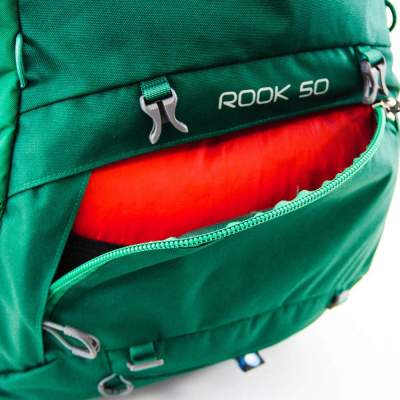
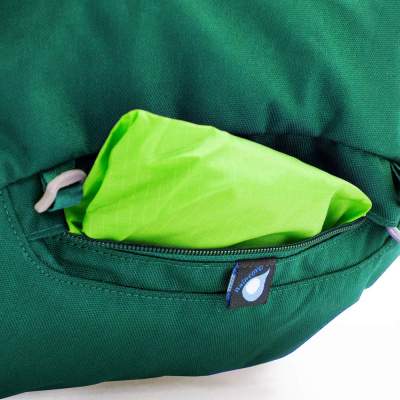
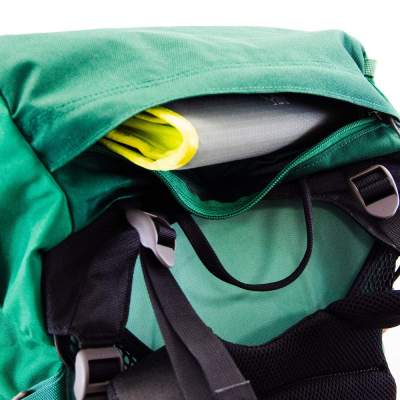
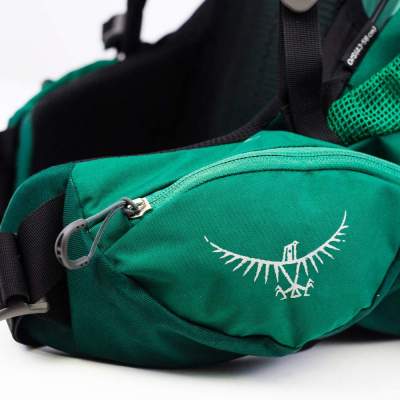

Daniel says
Hi Jovo,
Thank you for the quick response. Thanks for pointing out the new Volt it looks okay but I do not prefer that type of back system but I may try it as well. The Rooks system and AG system looks more tempting comfort/ventilation wise. Do you think with 15kg Rook would be as comfortable as Aether/Atmos? I tried Atmos and felt very good. At this moment I am leaning toward Rook65/Aether60-70. Anyway I have to try them as with Rook I do not have any experience. I prefer Aether more than Atmos since many reviews said it is more comfortable for carrying 15+ kilos than Atmos and also due to the extra entrance also Atmos can produce some strange noise from the hip belt which maybe can be frustrating but I am not sure if that is the case also with the newer generation. But for Aether my biggest concern is to pick 60 or 70. Compared to 50L – 60L wouldn’t be too much of an upgrade. 65 seems just nice for Rook – ah just that missing front pocket yeah maybe Osprey wants to have something to improve Rook after few years as they did with Atmos bottom straps.
What do you think for 1 week long hikes occasionally more like GR20 sometimes with tents sleeping bag and so on mostly in normal temperatures with some minus but nothing extreme would 60L be enough? What would you pick personally and why from Rook65 – Aether60/70 or Atmos 65? Xenith 75 maybe too much. Really interested in your opinion – I know that is for your case only not mine – but I am interested since you have a tons of experience.
Yeah I know that you have good experience with Deuter and many people uses it in Austria as I saw so I tried them but I didn’t find the as comfortable for some reason – as you also mentioning there are no best backpack and one backpack couldn’t fit for everyone.
Thanks a lot,
Daniel
Jovo says
Hi Daniel, it is difficult to say if the Rook would be as comfortable as the other two packs. There are reasons why Aether and Xenith have a heat-molding hip belt, I do not think that anything can be better, but those are heavy packs. There is also a reason why Atmos has that Fit-on-the-Fly hip belt design. Those features are missing in the Rook series. There are always pros and cons. There can be no “the best pack” in an absolute sense.
Regarding 60 liters capacity, as you know it depends on how bulky your stuff is. I am convinced this is enough, you still have plenty of the attachment points around. I use to say that heavy loads require heavy packs, perhaps I am too old fashioned but this is how I see this. I have a comparison Xenith – Aether so please have a look. It tells you that Xenith is a better pack, but Aether has this incredible mesh panel which I would not exchange with what Xenith offers. So as you see there is always something that is more important and I am willing to ignore the other things. But note that Rook’s back panel is the same level as those in Aether and Atmos packs, it is excellent.
But to answer your question, if I have to choose from the four packs, I would probably go for Aether. I have yet another Aether – Atmos comparison and I gave my reasons for Aether.
Daniel says
Hi Jovo,
I would ask your opinion as I have great interest in the Rook series(the 65L in truth) I have an older 50L backpack which is very good for weekend hikes but I found not enough in longer hikes like 4-5+ and struggled a bit in some circumstances when needed to carry tent, sleeping bag or in colder environment and so on…(Also misses the bottom strap which is a huge pain in my heart).
My first question would be what do you think how much kilos the Rook 65L can carry around comfortable in longer hikes? Could it handle 15-20kg comfortable? Or for that range I would look for Atmos 65L or Aethers 60/70L? I have a few week-long hikes already in plan for this year and next year also plan to go to something like the GR20 and I think my 50L wouldn’t be enough for these scenarios. I know that for 20 kg+ Aether or Xenith 75L would be the best I think those would be maybe an overkill and I pack 15kg+ rarely but sometimes would. I found the Rook really tempting as it is quite lightweight and has a very good back system so I would go for it if you think that could suit me best. What I only lack for this backpack that the front is pure sleek and lack that stretchable pocket on the front even if that would add a few more grams that is super useful in my opinion. The Atmos 65L is also looking good but I read that Aether handles better the weight and also Aether has a front/side Zip for the main compartment. So, all in all, do you think that Rook could be good or I should aim Aether 60L maybe 70L instead? Atmos is a good allrounder but I have a 50L allrounder I think even with the extra size would be a bit redundant and Xenith 75 would be maybe too much even though that is a very very good backpack.
BTW – Thank you for your reviews and articles I really enjoy reading them, keep up the good work and enthusiasm :). Oh and in really I would like to know your opinion in Osprey bags I tried some of Deuters but unfortunately didn’t find them so comfortable for me.
Br,
Daniel
Jovo says
Hi Daniel, first, thank you for the kind words. I am pretty sure that Rook 65 can handle 15 – 20 kg. There is really nothing one could object its suspension. Ventilation here is excellent. But indeed any of the other packs you mentioned would certainly do the job, those are among the best packs on the market, but those are considerably heavier and cost more.
You are completely right about the missing front stretch pocket, I am not sure what they were thinking when they decided to build the pack without it, I guess just to make it different. I wonder if you have seen the new Volt series, they have redesigned it a bit for 2019, no substantial changes (rain cover is added), but it has the front pocket, and the hip belt is also with movable fins, and the price and weight are in between the Rook and the other packs you mentioned. But its back panel is not a match for what you have in the Rook packs. I do think that such a tensioned mesh is the best option. If you like what you see in the Rook 65 pack, go for it.
As for Osprey vs Deuter, I should perhaps write a text about this. Obviously, no other brand is a match to Osprey when it comes to the number of models they launch every season, and they are really good. But I have been using Deuter’s tensioned mesh packs for more than two decades and I know that those are incredibly reliable packs.
Rodney Mruk says
The suspension system is NOT fully adjustable. It is only 1/2 adjustable in that the shoulder harness is adjustable, The hip belt is the most important part of the suspension system. Major market manufacturers of backpacks like Osprey target the hip belt for the ‘average’ backpacker. When people with larger waists (38″ or 40″ and up) try to fit these packs, the hip belt padding does not wrap all the way around the iliac crest / hip bone. Thus it does not distribute the load properly. Since the whole suspension system is THE most important part of the pack, such packs without adjustable hip belts are a failure. you do your readers a disservice if you do not point out this limitation.
To see packs with truly adjustable hip belt fit, see the Osprey Atmos / Aura, Gregory Baltoro / Deva, or Granite Gear Crown 2 among others.
By the way, the Kelty Redwing 50 (not the tactical) has a shoulder harness adjustment called ‘Perfect Fit”. But unfortunately they too do mot have adjustable hip belts or sizing.
Jovo says
Hi Rodney, thank you for the comment. You are absolutely right that the suspension is the most important part. But this is about terminology, so I have replaced the word harness with the phrase torso length in one sentence in the text above. I normally use the phrases shoulder harness and hip belt and describe them separately. I am very familiar with all the packs you mentioned.
Now, what you describe as an adjustable hip belt is in fact a replaceable hip belt so that people can choose a larger or smaller circumference.
But one could argue that the term adjustable hip belt might be used to the designs where the foam adjusts to the body due to body’s temperature as you have in some Osprey’s packs.
There are also packs where you can move the padding forward and backward to fit your body shape, so these are again not replaceable hip belts, but in my view they are even better regarding the adjustability because they allow different people to use the same pack. You can see this in Gregory Paragon and Gregory Maven packs.
As you probably know, Deuter has no packs with replaceable hip belts in the sense you are using the term. But I am pretty sure that Deuter’s designers would not accept your argument that their packs’ harnesses are not adjustable. No doubt, they would also not accept your statement that their packs are a failure. As you know they build packs from 19th century.
Most of the packs on the market are without replaceable hip belts, and this includes even the brands which you mentioned. So I think you are making too strong statements.
All in all, from the given context it is obvious what the adjustability here implies. The Rook 50 pack has an adjustable shoulder harness and it is definitely not a failure.